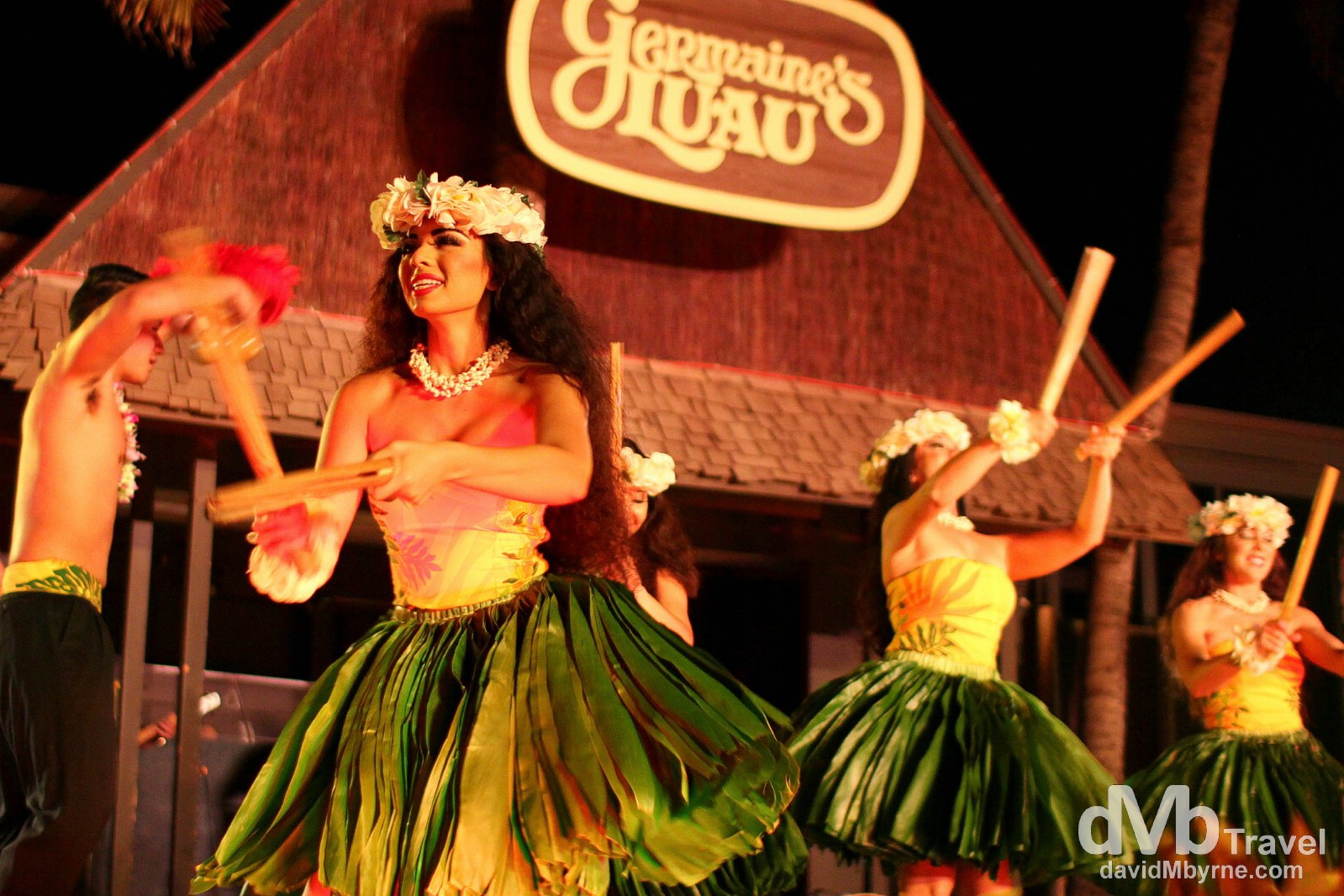Germaine's Luau
The For-Tourists Traditional Hawaiian Feast
Germaine’s Luau, Oahu, Hawaii. February 27, 2013
Before I leave the Hawaiian island of Oahu in the morning for the Hawaiian island of Hawaii, a.k.a. the Big Island, I went for a bit of (touristy) Hawaiian culture this evening at Germaine’s Luau. It was fun. A lot of fun. Oh, and photogenic. A great combination.
1. An elaborate Hawaiian feast or party (especially one accompanied by traditional foods and entertainment)
– The RoughGuide to Hawaii
Germaine’s Luau
At Germaine’s, one of the busier luaus in Hawaii (they claim to have entertained & fed over 3 million people since opening in 1976), the usual Hawaiian suspects of Hawaiian music & hula are served up in equal measure along with an all-you-can-eat buffet comprising kulua (underground roasted pig) and traditional Hawaiian poi, a dish made from the fermented taro root which has been baked and pounded into a paste. The pig was delicious, as were the copious amounts of free cocktails, but I could pass on the poi. The Germaine’s product is a well oiled machine – they’ve been doing this for a while now and it shows. But it’s an enjoyable night out, especially when the audience participates.
– Reproduced from a panel on display in the Old Lahaina Courthouse in Lahaina, Maui, Hawaii.

